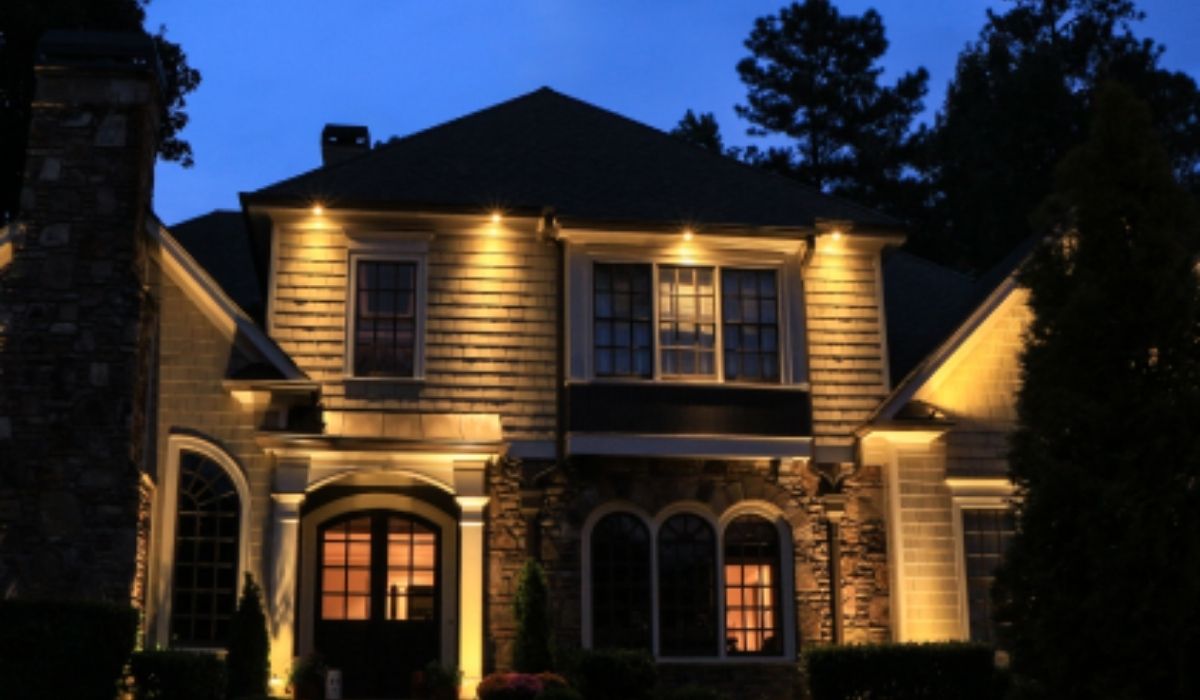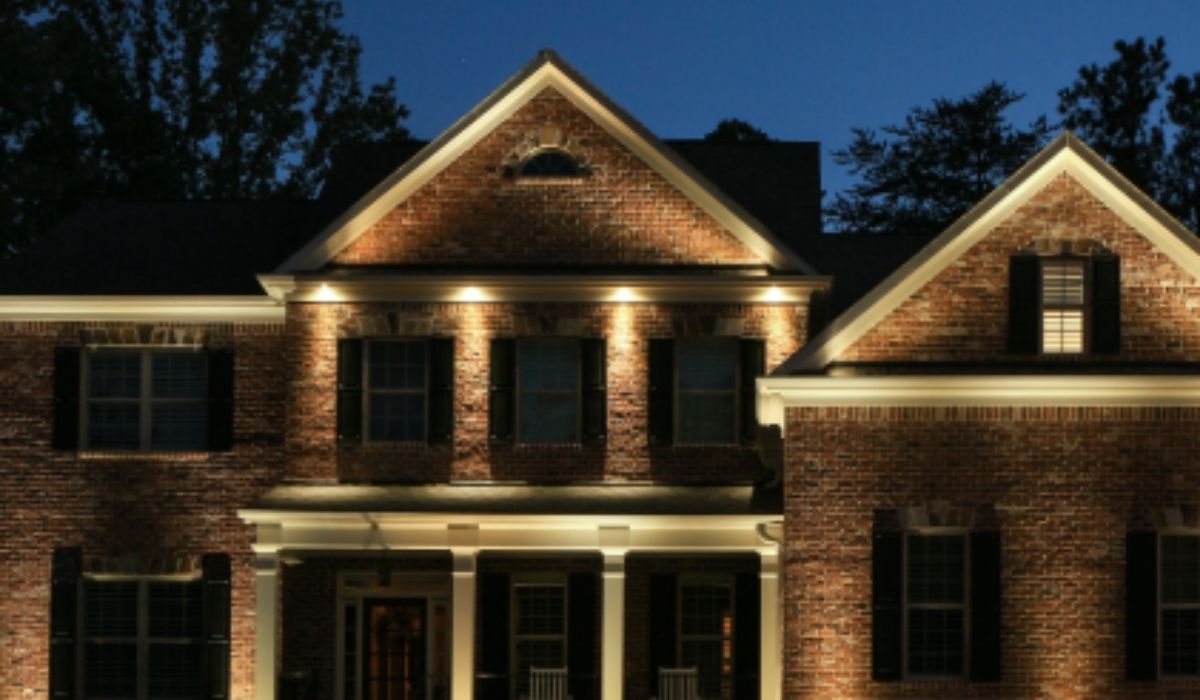Lighting is more than just a necessity—it’s a transformative design tool that can enhance your home’s ambiance, functionality, and aesthetic appeal.
When thoughtfully planned and implemented, replacement lighting has the power to refresh outdated spaces, boost energy efficiency, and breathe new life into both interiors and exteriors.
Whether you’re looking to upgrade fixtures, brighten dark corners, or create more inviting outdoor spaces, choosing the right lighting solutions is key.
In this guide, we’ll explore the must-know strategies and types of replacement lighting to help you illuminate your home with style and purpose.
The Power of Replacement Lighting

Imagine stepping into your backyard on a warm evening only to find your beautifully landscaped space hidden in shadows.
The solution? Proper outdoor lighting. But even more broadly, replacement lighting is your opportunity to fix issues in visibility, highlight key features, and even save money on your energy bill.
Whether you’re replacing an old chandelier in your dining room or upgrading your pathway lights, this transformation can make your home feel more modern, safer, and more welcoming.
Step 1: Assessing Your Current Lighting Setup
Before you begin replacing anything, it’s essential to take a step back and evaluate your current lighting system. Consider the following:
- Fixture Placement & Condition: Are fixtures outdated, damaged, or poorly placed?
- Light Bulbs: Note the type (LED, incandescent, CFL), wattage, and color temperature.
- Natural Light Contribution: Is each space optimized for daylight use?
- Light Levels: Are rooms too dim or overly bright for their intended use?
- Controls: Are you using standard switches, or do you have dimmers, timers, or smart controls?
By evaluating what’s currently working—and what’s not—you can make informed decisions when selecting replacement lighting options.
Step 2: Planning Your Lighting Upgrades
Now that you’ve identified the areas for improvement, it’s time to plan your upgrades. A smart lighting transformation considers the type of lighting needed in each room:
- Ambient Lighting: General overhead light to provide even illumination (e.g., ceiling fixtures, chandeliers).
- Task Lighting: For focused activities such as reading or cooking (e.g., under-cabinet lights, desk lamps).
- Accent Lighting: Highlights features like art, textured walls, or plants (e.g., wall sconces, spotlights).
- Natural & Decorative Lighting: Skylights, large windows, and aesthetic lamps contribute to the beauty and health of your environment.
Dimming controls, color temperature (warm for relaxing spaces, cool for task areas), and fixture design should all be part of your planning.
Step 3: Transforming Outdoor Spaces with Replacement Lighting
Exterior lighting is a game-changer. It enhances safety, boosts curb appeal, and creates welcoming atmospheres for gatherings. Here are must-know solutions for replacement lighting outdoors:
Illuminate Pathways and Driveways
Pathway lighting is crucial for guiding guests and preventing accidents while adding elegance to your landscape. Popular choices include:
- Solar-Powered Path Lights: Eco-friendly and cost-effective, these lights charge during the day and activate at dusk.
- LED Path Lights: Known for longevity and energy efficiency, LED lights provide bright, consistent illumination.
- Low-Voltage Options: These operate on a 12V system, reducing energy consumption while offering excellent light quality.
When choosing pathway lights, pay attention to fixture height and beam spread. Lower lights with wide angles offer a soft, ambient effect, while taller fixtures cast focused beams for brighter walkways.
Use Specialty Mounts for Added Flair
Mounting options matter as much as the fixtures themselves:
- Tiered Mounts: Install lights at multiple heights for layered lighting effects.
- Ground Stakes: Easy to reposition for seasonal needs or changing landscaping.
- Deck-Mounted Brackets: Perfect for lighting up stairs or elevated platforms.
These small touches can elevate your lighting design and improve both form and function.
Step 4: Interior Transformation with Replacement Lighting
Inside your home, lighting should align with spatial functions. Every room has unique needs that replacement lighting can address.
Living Room & Common Areas
Use a mix of ambient and accent lighting to create a warm and inviting space. Swap old ceiling fans or outdated chandeliers with modern pendant lights or flush mounts. Add dimmers for ultimate control over mood.
Kitchen & Task Areas
Under-cabinet lighting and pendant fixtures over islands can improve visibility and aesthetics.
Replace harsh fluorescents with adjustable LED systems that offer both brightness and efficiency.
Bedroom
Use soft, warm-toned lights to promote relaxation. Wall sconces and bedside lamps with dimmers are ideal replacements for bright overheads.
Bathrooms
Vanity lighting often needs replacement due to poor placement or inadequate brightness. Choose horizontal bar lights or vertical sconces on each side of the mirror for even, shadow-free lighting.
Step 5: Consider Energy Efficiency and Smart Controls
One of the biggest advantages of modern replacement lighting is improved energy efficiency. Look for:
- LED Bulbs: Up to 80% more efficient than incandescent bulbs and last 10–20 times longer.
- Energy Star Fixtures: Certified for eco-friendly performance.
- Smart Lighting Systems: Wi-Fi-enabled bulbs and switches offer remote control, scheduling, and voice integration.
Dimmers and occupancy sensors not only save energy but also extend bulb life and enhance the overall functionality of your lighting system.
Step 6: Design with Light Color and Temperature
Light temperature has a psychological and physiological effect:
- Warm White (2700K–3000K): Great for living rooms, bedrooms, and dining areas. Offers a cozy, relaxing atmosphere.
- Neutral White (3500K–4000K): Balanced for kitchens and workspaces.
- Cool White (5000K–6500K): Best for task lighting or garage setups; mimics daylight.
By replacing mismatched bulbs with unified temperatures, you can create consistent, harmonious lighting across your home.
Step 7: Enhance with Decorative Fixtures
Lighting isn’t just functional—it’s fashionable. Choosing stylish fixtures for your replacement lighting project can be as impactful as buying new furniture.
Some design-forward options include:
- Chandeliers: Ideal for entryways, dining rooms, and large living rooms.
- Pendant Lights: Great for kitchens and hallways.
- Sconces: Add elegance to stairways, hallways, and bathrooms.
- Track Lighting: Offers versatility and a modern look.
Make sure your fixture finishes (brushed nickel, black matte, brass) align with your home’s overall decor.
Step 8: Don’t Forget Transitional Spaces
Often overlooked, hallways, staircases, and landings can greatly benefit from replacement lighting:
- Recessed Lighting: Ideal for narrow hallways.
- Motion Sensors: Add convenience and safety to staircases.
- Accent Fixtures: Use to highlight artwork or architectural features.
Thoughtfully illuminating these spaces ensures a cohesive lighting experience throughout your home.
Final Thoughts: Start Your Replacement Lighting Journey Today
Replacement lighting is a cost-effective and creative way to elevate your home’s comfort, aesthetics, and efficiency.
By understanding your current setup, planning for each space’s unique needs, and choosing modern, energy-saving solutions, you can achieve a lighting transformation that is as practical as it is beautiful.
Whether you’re making small upgrades or doing a full home overhaul, remember that good lighting design is all about balance—between form and function, brightness and warmth, efficiency and elegance.
Ready to bring your home to life through light? Begin your replacement lighting journey today and experience the transformation firsthand.
Ready to Upgrade? Here’s How NightVision Outdoor Lighting Can Help
At NightVision Outdoor Lighting, we take pride in delivering our customers the highest quality landscape lighting fixtures, ensuring exceptional value in every installation.
Our outdoor lighting products meet stringent standards of appearance and performance, reflecting our unwavering commitment to excellence.
Whether you’re replacing outdated fixtures or starting a complete outdoor lighting overhaul, we provide solutions that are both stunning and reliable.
While our lighting fixtures are built for durability, we understand that no system lasts forever.
That’s why we offer a comprehensive maintenance contract that outlines our meticulous replacement lighting process—giving you ongoing assurance and peace of mind.
Illuminate your space with confidence—choose NightVision Outdoor Lighting for long-lasting beauty, safety, and performance.
FAQs
What is replacement lighting, and why is it important for homeowners?
Replacement lighting refers to the process of upgrading or changing outdated, inefficient, or non-functional lighting fixtures with new ones to improve performance, aesthetics, energy efficiency, and safety. It’s important for homeowners because modern lighting solutions not only enhance the look and feel of your home but also reduce energy bills, increase property value, and provide better illumination for daily activities.
How do I know if I need to replace my home’s lighting fixtures?
You may need replacement lighting if you notice flickering lights, outdated designs, uneven lighting, increased electricity bills, or fixtures that no longer match your décor. A lack of brightness or the presence of warm or cool lighting in the wrong space are also signs that an upgrade is due.
What types of lighting should be considered during a home lighting replacement project?
A well-rounded replacement lighting project should include:
- Ambient lighting for general illumination
- Task lighting for specific functions like reading or cooking
- Accent lighting to highlight artwork or architectural features
- Decorative lighting for visual appeal
- Natural lighting enhancements, if possible
- These types help create a layered, functional, and aesthetically pleasing lighting design.
Is LED the best choice for replacement lighting?
Yes, LED lighting is considered one of the best choices for replacement lighting due to its energy efficiency, long lifespan, low heat emission, and versatility in color temperature. LEDs also come in a wide range of fixture styles and brightness levels, making them ideal for nearly every room in your home.
What are the benefits of using dimmers in my new replacement lighting setup?
Dimmers allow you to control the intensity of your lights, which can help:
- Set the mood or ambiance in a space
- Save energy and reduce utility costs
- Extend the life of your light bulbs
- Improve visual comfort and reduce eye strain
- Dimmers work especially well in living rooms, bedrooms, and dining areas where lighting needs vary throughout the day.
How can replacement lighting improve the safety and security of my home?
Upgrading to modern, brighter, and more strategically placed lighting—especially outdoors—can:
- Illuminate walkways, driveways, and entry points
- Deter intruders or suspicious activity
- Reduce the risk of trips and falls
- Motion sensor and dusk-to-dawn lights are particularly effective in boosting safety with minimal energy use.
What are some popular replacement lighting trends for 2025?
Trending replacement lighting options in 2025 include:
- Smart lighting with app or voice control
- Sustainable materials in fixture design
- Mixed metal finishes (e.g., brass and matte black)
- Minimalist fixtures for clean, modern interiors
- Statement pendants and chandeliers in unexpected spaces like bathrooms or kitchens
Should I hire a professional for my replacement lighting project?
While minor replacements like swapping out light bulbs or plug-in fixtures can be done DIY-style, it’s highly recommended to consult a licensed electrician or lighting designer for more complex tasks. They can ensure proper installation, safety code compliance, and optimal lighting design tailored to your space and lifestyle needs.




